How will the Metaverse be designed?
Who will design the new three-dimensional internet? And what will it look like?
“No one’s building the metaverse. Whatever the metaverse is going to be will be the amalgamation of all of these things into whatever best serves humanity.”
Michael Beneville
Beneville and his team built this digital version of their workspace on a platform called Vatom Spatial Web, a piece of software Beneville and his partner Eric Pulier created for building 3D virtual worlds that people can inhabit in avatar form and navigate as if they were in a physical environment. Through Vatom Spatial Web, Beneville is creating his own little slice of the metaverse, an inhabitable form of the internet that is powered by blockchain technology and accessible through web browsers, VR, and AR headsets.
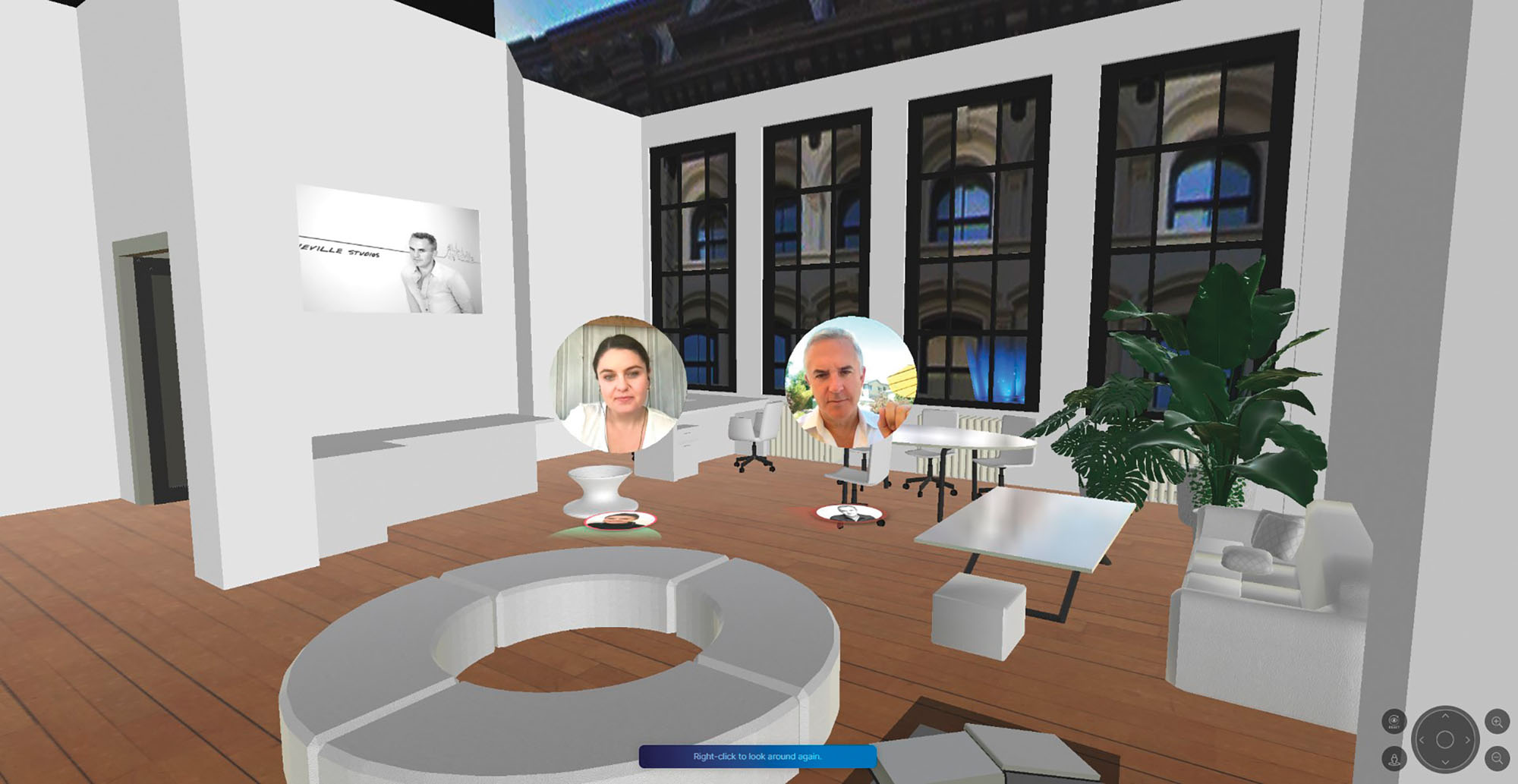
Virtual spaces like these are becoming both more common and increasingly sophisticated as companies race to build platforms that will draw people into their respective corners of the metaverse, the all-encompassing term used to describe this constellation of world-building software, each operating with its own rules, aesthetics, and purposes. For platforms like Spatial.io, Microsoft Mesh, and Facebook’s Horizon Worlds, the metaverse looks like an extension of work or life, where avatars can meet in glossy modern environments or otherworldly landscapes for get-togethers. Meanwhile, mega-platforms like The Sims, Minecraft, Second Life, and Roblox have been building expansive, immersive virtual worlds for years, allowing players to build their own structures and explore these ever-growing landscapes.
In the future, people won’t experience a single metaverse; rather, they will navigate multiple interoperable metaverses, all with the ability to connect to one another in a tapestry of digital space, and all powered by the blockchain and in-platform currencies that fuel their meta-economies. “No one’s building the metaverse,” Beneville says. “Whatever the metaverse is going to be will be the amalgamation of all of these things into whatever best serves humanity.”
But what does it mean to best serve humanity in this new digital realm? And who gets to decide? The virtual world, for all its affordances, still needs to be designed and built. The question is, who will be responsible for it? For centuries, architects, engineers, and builders have largely dictated the shape of the built environment, mostly out of necessity. The physical world’s complexities require safeguards in the form of regulations, zoning, accreditations, and best practices. There are good reasons why not just anyone can build a skyscraper.
The metaverse, on the other hand, is generally regarded as a collective reimagining of the built environment. It’s often compared to the Wild West, where anyone with a pioneering spirit and a little bit of crypto can plant their flag and build their own slice of virtual world in whatever form they please. The reality, of course, is less egalitarian than that. The metaverse is increasingly mediated by the same forces that control real estate in the physical world—namely, money, access, and knowledge. Already, speculative crypto investors and real estate companies are buying large tracts of “land” in the metaverse, where a parcel of virtual space can command thousands of dollars.
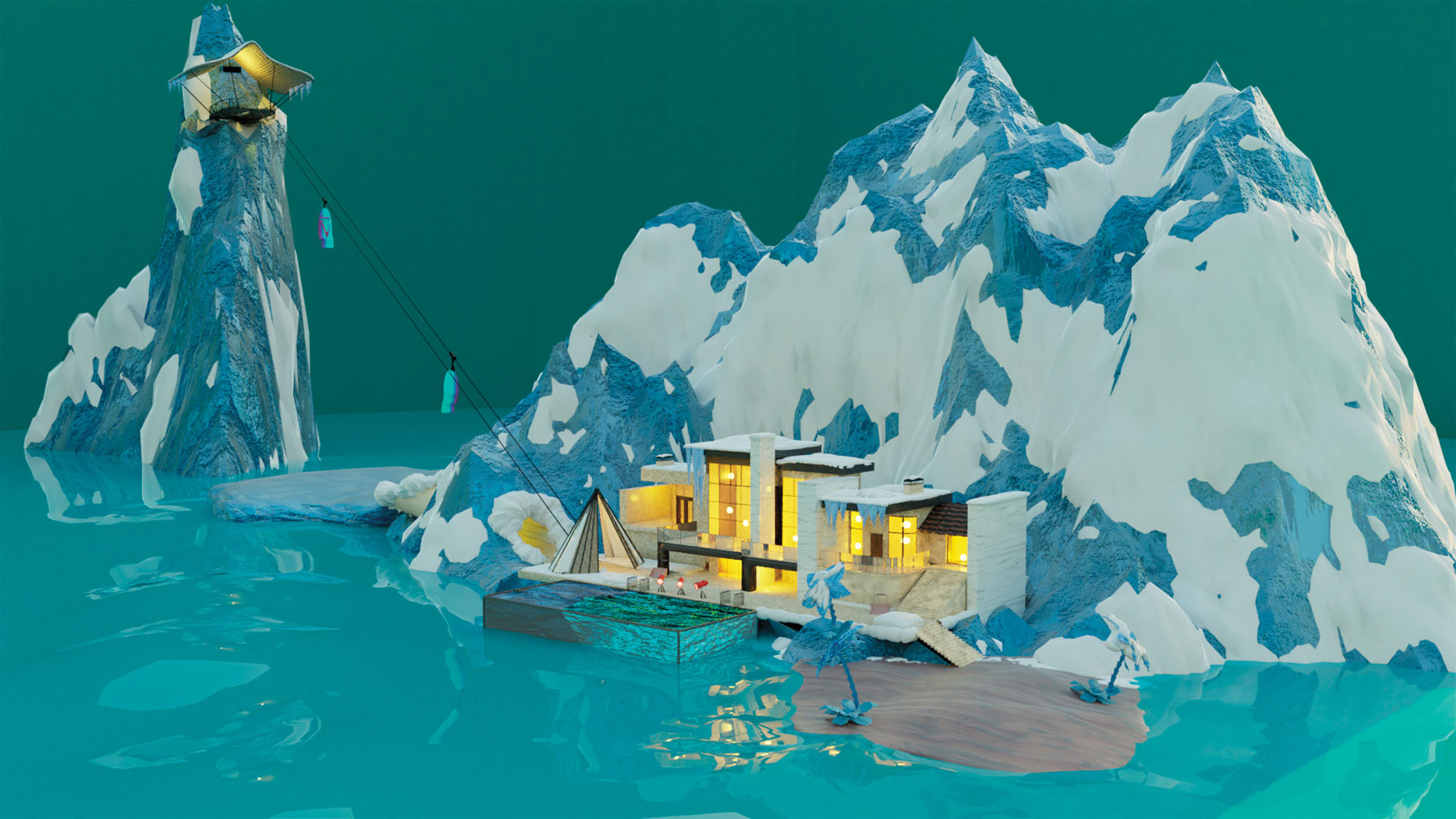
In Decentraland, one of the largest metaverse platforms, the price for a parcel (measuring about 52 by 52 feet) has jumped to more than $10,000 in the game’s highest-trafficked virtual districts. This price surge is largely driven by the hype around Facebook’s Meta rebrand and other companies and brands like Microsoft, Google, and Nike investing in metaverse technologies. It’s also a result of basic land economics and the finite nature of the platform’s virtual acreage. Decentraland has stated it will make only 90,000 parcels available, effectively re-creating a virtual equivalent to the scarcity dynamics seen in cities like New York and San Francisco.
Janine Yorio likens the current metaverse gold rush to the early days of the web 1.0, when companies early to a new technology could strike it big. Yorio is a cofounder of Republic Realm, a metaverse development company that invests in metaverse real estate and NFTs (non-fungible tokens). Her team has invested in more than 2,500 real estate holdings across 19 metaverse platforms, including six large-scale real estate developments on platforms including Decentraland, The Sandbox, and Axie Infinity. “We are effectively a landlord of the metaverse,” she explains.
Like real world developers, Republic Realm has partnered with architects and designers to create its developments, which include Metajuku, a 16,000-square-foot mall in Decentraland based on the design of the Harajuku district in Tokyo. Republic Realm hired Austin, Texas, designer Martin Guerra to design the glowing space, where avatars can roam around and spend money on virtual goods through their crypto wallets. However, the company’s most ambitious, and lucrative, development is called Fantasy Islands, a planned community of luxury private island villas sold as 3D NFTs on the metaverse platform The Sandbox. Owners use their virtual villas similarly to how they might in real life—as a quiet retreat, a gathering place for virtual friends, or a pretty storehouse for any NFTs or objects purchased in the metaverse.
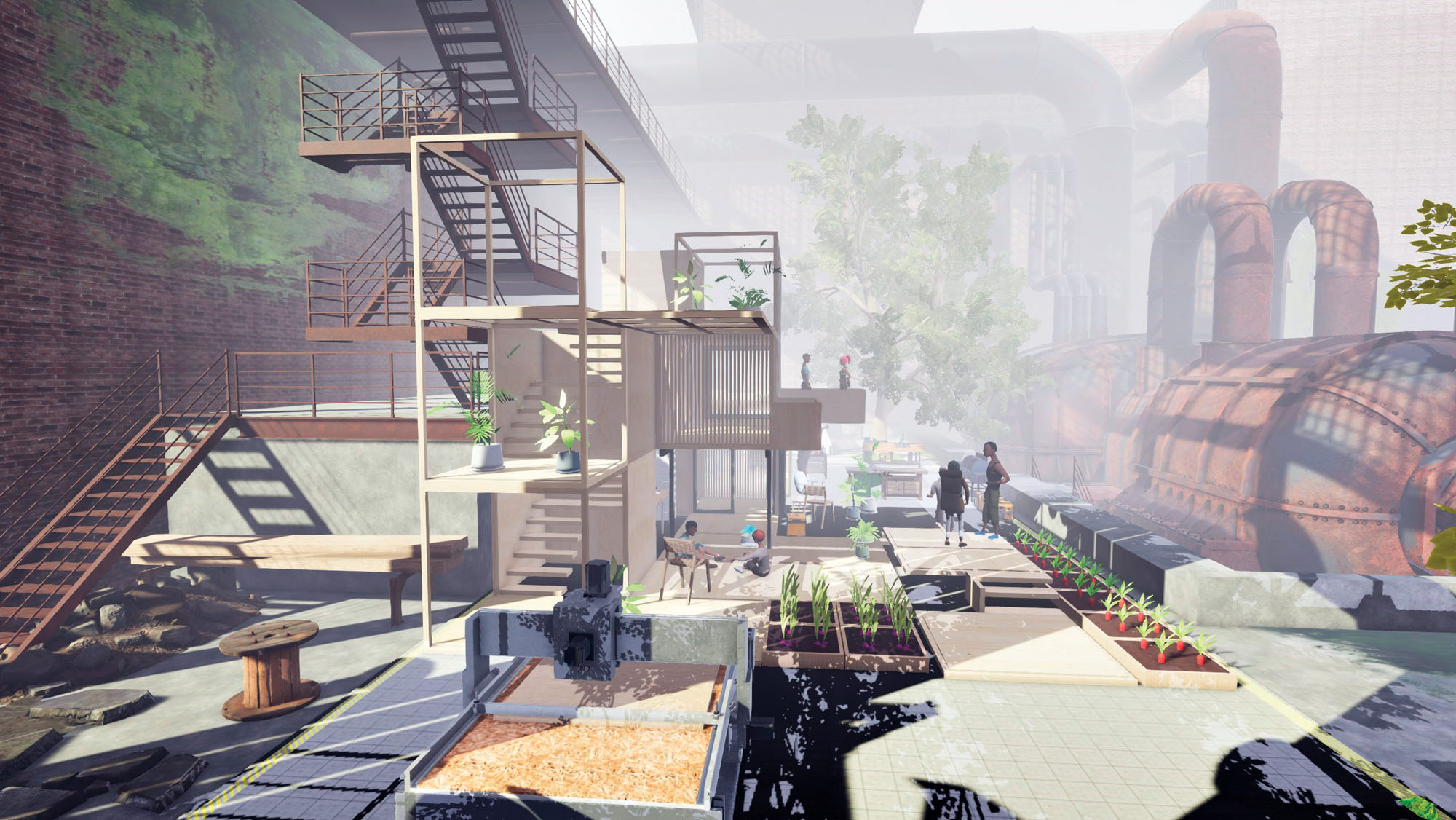
Vlad Yakovlev, an in-house 3D designer and developer at Republic Realm, designed the villas, each of which sits on a parcel of land measuring 325 by 325 feet. The virtual homes all have their own distinct styles, ranging from Costa Rican ecolodges to Mediterranean-style island abodes. The most valuable virtual home in Fantasy Islands’ portfolio is currently a futuristic structure that sits on an island made of ice. So far, Republic Realm has sold six villas (only 100 will be built in total) for the equivalent of $15,000. Today, they are trading at the equivalent of around $300,000.
The villas are an interesting case study in metaverse aesthetics. Like much metaverse architecture, they have a softly pixelated fuzziness, as if being viewed through fogged glasses. Walking around a building in the metaverse can feel like wandering through a just-finished construction project—structurally sound but lacking in texture. Unlike videogames, which are rendered in photo-realistic high fidelity, metaverse architecture is often designed in lower resolution so anyone, on any web browser, can access and load the spatial environments.
As a result, some metaverse platforms like Decentraland and Cryptovoxels govern their worlds through a series of rules that dictate, to varying degrees, what parcel owners can build on their land. In Cryptovoxels, for example, users pay extra to build in color. In Decentraland, a parcel of land must abide by a series of design constraints that allow the platform’s wide variety of artwork to render quickly regardless of browser speed. These rules effectively act as a series of zoning regulations that can determine everything from building height to how close neighboring structures should sit.
Though the metaverse often loosely mimics the organizational mores established by the physical world, the buildings themselves routinely deviate from what might be considered feasible real-world design. In the metaverse, gravity doesn’t exist, nor do material constraints. “Things like structure, materiality, and cost, for that matter, all go out the window,” says Leon Rost, a principal at Bjarke Ingels Group (BIG), who has worked on a handful of virtual projects for clients. This lack of stylistic constraint has attracted architects who are interested in pushing the formal boundaries of what space can look like. BIG partnered with UNStudio to develop a virtual meeting platform called SpaceForm, where people can collaborate in real time inside futuristic rooms featuring holographic tables that display 3D renderings and data visualizations. Beneville, meanwhile, has built hovering performance stages for clients like iHeartRadio that float in outer space like satellites. Jose Sanchez, a professor of architecture at the University of Michigan Taubman College who designs highly immersive multiplayer videogames through his studio Plethora Project, is designing a videogame where collectives of players can build their own structures that drip in greenery. “From a design standpoint, you have to think very differently, because the same rules don’t apply in the virtual world as they do in the physical world,” Rost says.
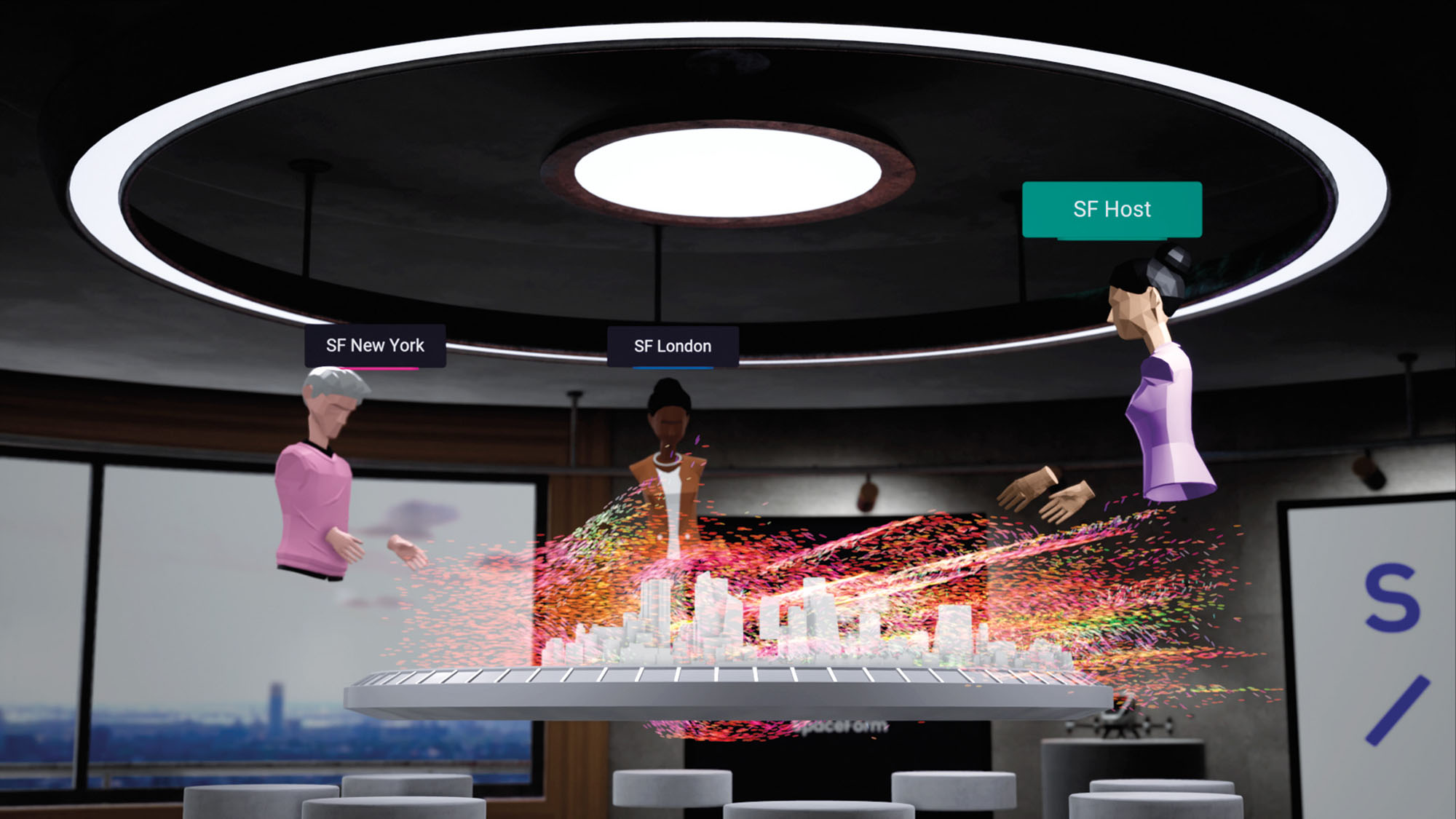
In a recent project, Lara Lesmes and Fredrik Hellberg of Space Popular, an architecture studio based in Spain and London, created a virtual gallery for the Spanish organization Fundación Arquia modeled on the layout of Barcelona. Digital avatars can wander through seemingly endless labyrinths of sunrise-hued rooms whose architectural features look as if they were pulled from an M.C. Escher drawing. The rooms were designed with a misty softness that Lesmes says is helpful for loading times and for easing screen-addled eyes into a new environment. “Lighting is incredibly important; it can make a virtual space feel a lot better,” she says.
Lesmes and Hellberg have been creating virtual spaces since 2013 for clients including the MAXXI museum in Rome and RIBA in London. They view immersive online environments as first and foremost a place for gathering, which dictates how they think about designing the digital spaces. They’ve discovered that people who find themselves in a virtual gallery still rely on cues learned from the physical world to navigate. “In order for people to do something with a virtual environment, you need to be able to look at it and understand what you can do in there,” Hellberg says. “We wanted people to immediately be able to come in and just use the behavioral codes that they already have in their real life.”
Designing for the metaverse is second nature for many architects, who already spend much of their time mocking up spaces in virtual form. Jinha Lee, cofounder of Spatial (spatial.io), says his team works with a handful of architects who have made the switch from physical buildings to 3D architecture full-time. “They call themselves metaverse architects,” he says. Lee, himself a designer, ensures all of Spatial’s environments are imbued with thoughtful design details like ambient lighting and open shelving for displaying virtual artwork, while still maintaining hints of impossibility, like a waterfall that pours from the ceiling of the lobby onto the floor. “We want our spaces to be grounded in reality, but looking at the future,” he says.
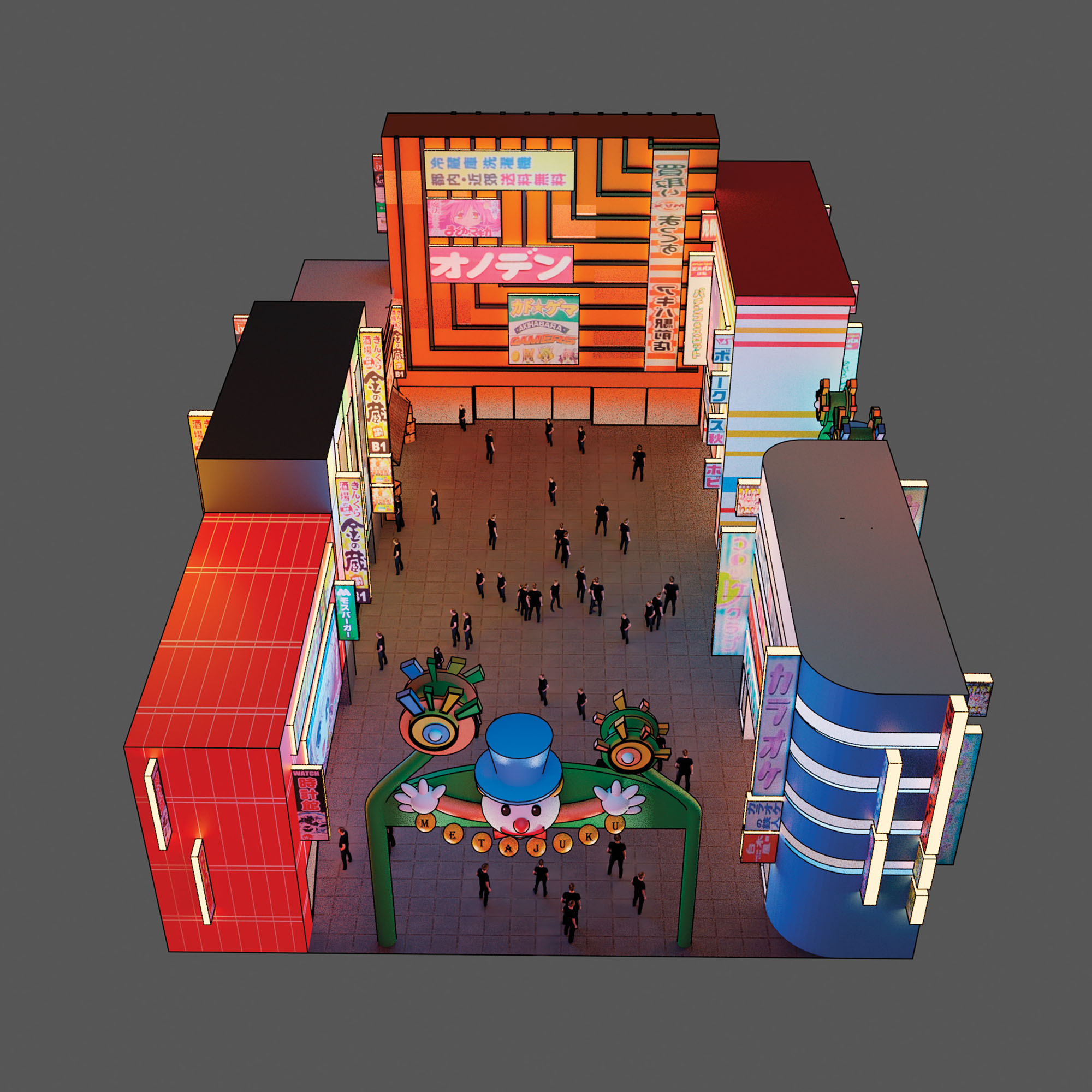
It’s those moments of structural impracticality that make Republic Realm’s Yorio assert that traditional architectural skills aren’t required to create compelling virtual environments. “You don’t need a Zaha Hadid in the metaverse to build something really cool,” she says. (Ironically, Hadid’s firm just designed NFTism, a virtual art exhibition at Art Basel Miami that explored architecture and social interaction in the metaverse.) What counts as boundary-pushing in the physical world might be considered tame in the metaverse, where buildings rely on visual excess to attract visitors. Often these spaces are designed and coded by users or developers with no formal design experience.
This might feel like an existential threat to some architects, but Sanchez of Plethora Project views this realm as an opportunity to question who can and should participate in the design process. “There’s power in a crowd to explore a space of possible designs way faster and with less bias than one designer,” he says. “The platforms that are able to expand who has a seat at the table will bring, perhaps, the most interesting and most expansive sense of what design really is in this environment.”
Source: Metropolismag.com
